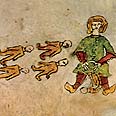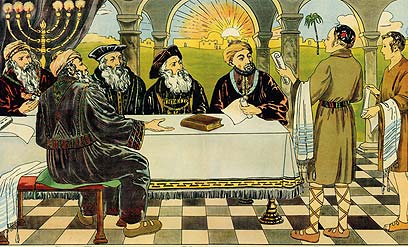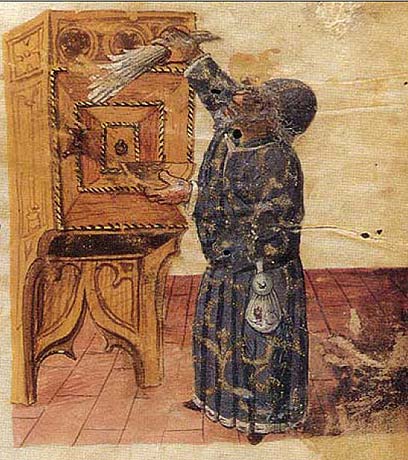
Schechter Haggadah sheds historical light on ancient ritual
Schechter Institute’s haggadah explores historical roots of Passover seder’s rituals. Joshua Kulp, commentator and editor of new haggadah, says explosion of haggadot on market indicates search for new meaning to ancient, ‘irreplaceable’ ritual
Dr. Joshua Kulp, co-founder of the Conservative Yeshiva in Jerusalem and board member of the Schechter Institute of Jewish Studies, wrote commentary to prominent historical and Jewish texts on the ritual origins of the Passover holiday in the Schechter Haggadah.
The project, which took about seven years to complete, was an outgrowth of classes Kulp taught in Jerusalem and resulted in an impressive, beautifully illuminated 290-page tome that would enrich any family seder.

From his own interest in the historical developments of the seder rituals, Kulp understood that the plethora of historical texts on the origins of the Passover rituals laid largely inaccessible to a broader, English-speaking audience, providing the impetus behind his haggadah endeavor.
The Schechter Haggadah, published by the Schechter Institute of Jewish Studies in Jerusalem, is organized into three parts: the text, 115 illustrations picked from dozens of haggadot, and commentary exploring the historical development of each section of the haggadah as well as some of the halachic debates on seder ritual.
“The ritual of the Passover seder started in a very specific historical context in 2nd century Israel within Greco-Roman culture, as a replacement for lost rituals from the Temple. The Jews needed either to create an alternative, or abandon Judaism. This is the starting point,” said Kulp.
“Most often, seder rituals were altered as Jews moved place to place and were either unfamiliar with their original meaning, or the availability of certain foods changed, language changed, and local customs changed,” he explained.
Find new meaning or bust
According to Kulp, modern Judaism’s influence on the Passover holiday has been characterized in recent decades by an explosion of specialty haggadot into the market. From feminist to family-participation, a plethora of haggadot become full of matzo crumbs and wine stains as they are added to families’ seder traditions from year to year.
Kulp sees this as “an attempt to bring new meaning to a night that is irreplaceable,” claiming that if it doesn’t have meaning, it either gets abandoned or reinterpreted.

“At the time of the destruction of the Temple, the Jewish world was facing a great crisis, but we today are facing the crisis of modernization. We are no longer in the ghetto, ” asserted Kulp. Because of this, many people are finding themselves being faced with the option of finding new meaning to old rituals or abandoning Judaism.
“For most people, observing these rituals in the same way remains hollow. Instead, they seek to infuse them with new meaning. The crises modern Jews face today are equally as difficult to overcome as those that Jews faced in the 1st and 2nd centuries. We can learn from the Jews of that period. They didn’t give up on Pesach,” encouraged Kulp.
A treat for history buffs
The Schechter Haggadah presents a compilation of sources and commentary, and not a pre-chewed presentation of material to be shared at the seder for inner spiritual reflection as many other recent popular family-participation haggadahs are. With its heavy textual basis, the haggadah may be most easily digestible for readers with a background in Jewish textual learning, though it still can be appreciated and enjoyed by a particularly curious and adventurous beginner.

Though published by the Conservative movement’s Schechter Institute, Kulp emphasizes that there is no ideological line to the haggadah, but rather that it rests on the assumption, largely recognized also by Orthodox Jewry, that Jewish ritual has evolved throughout history in accordance with the constraints and opportunities offered by the historical, cultural, and geographic circumstances of a given period.
With the abundance of themed haggadahs eclipsing the generation of Maxwell House haggadahs conveniently distributed in bulk at supermarkets around the Passover season, the Schechter Haggadah is a welcome addition to the profusion of haggadahs being published as new meaning for this ancient holiday is sought.
It is a great joy for the history buffs among us compelled to try their hand at the development of one of Judaism’s most prominent religious celebrations.










